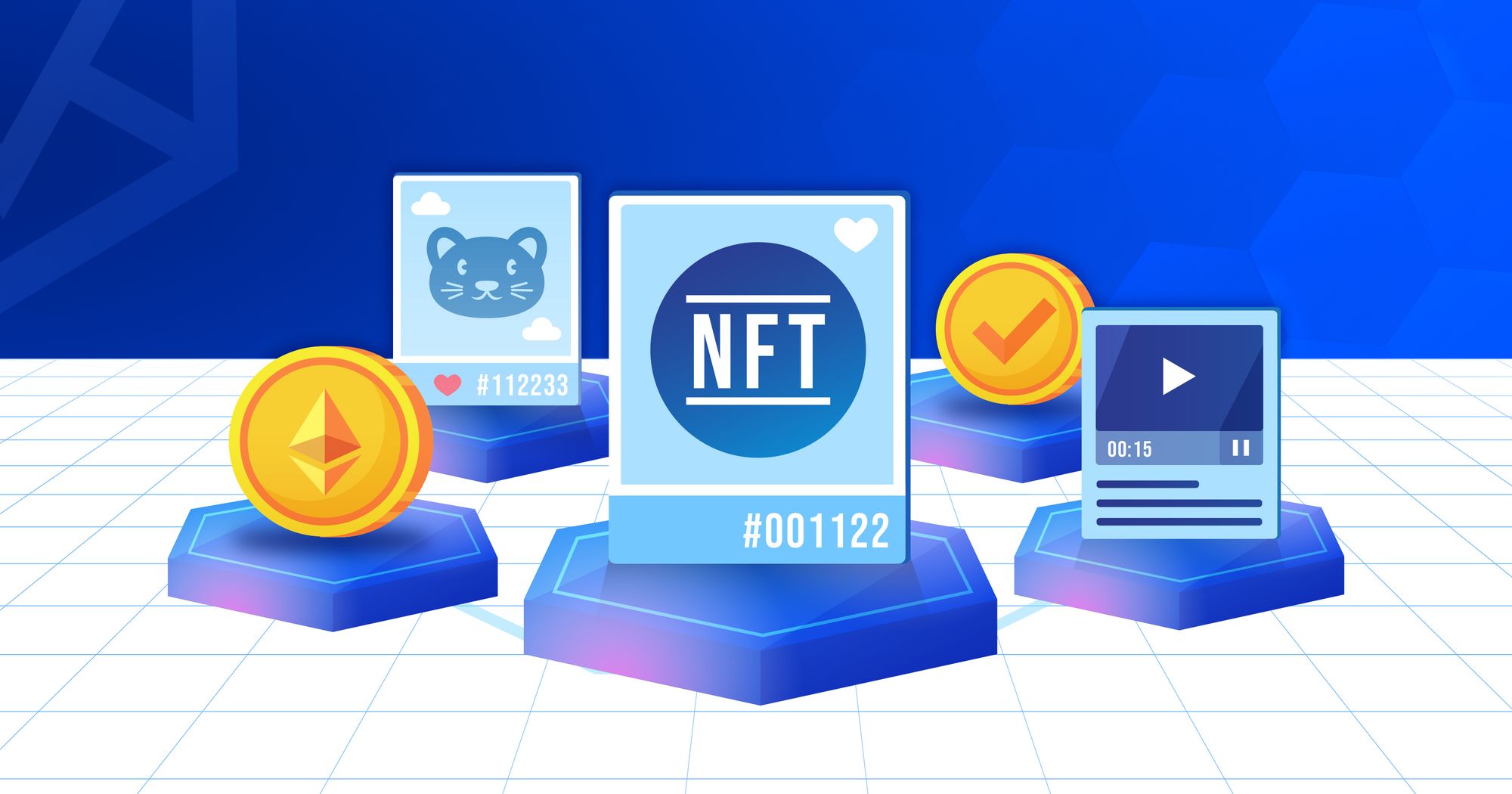NFTs or non-fungible tokens (NFTs) are digital assets based on the Blockchain. They are created using the same programming type used to create cryptocurrencies. They may also be tokenised representations of digital or physical assets that cannot be exchanged for one another. Like crypto assets, NFTs are also powered by blockchain technology. The Blockchain ensures verifiable and irrefutable proof of validity and ownership.
Decentralised applications (DApps) can leverage NFT technology to enable the creation and ownership of unique digital products and collectables. However, as NFTs are not interchangeable, they generate scarcity in the digital world. Furthermore, it is essential to remember that each NFT is unique and has its own distinctive value. Thus, even if they share the same platform and seem similar, two NFTs will never be identical.
Here's How NFTs work
NFTs are powered by Blockchain technology, the same technology that powers Bitcoin and Ethereum. NFTs are based on blockchains that act like publicly distributed ledgers that can be accessed by everyone. To record ownership, NFT employs Smart contracts, blockchain-based programs that can run independently.
When a person buys an NFT, their unique identity is encrypted and stored in a token that keeps track of ownership. This token is then disseminated around the network for everyone to see. However, only the owner can access the NFT through their wallet.
Diverse Applications of NFTs
Because of its unique construction, each NFT has the potential to be used in a variety of applications. For example, a digital asset management platform is a great way to represent physical assets digitally, like real estate and artwork.
NFTs can also act as identity management platforms since they get built on blockchains. NFTs can improve transaction efficiency and open up new markets.
Because of its uniqueness, an NFT is easy to validate. Thus, it renders the manufacturing and distribution of counterfeit items futile.
Many crypto traders and connoisseurs use NFTs widely. NFTs serve by removing intermediaries and linking artists to audiences. Artists and creators use NFTs to sell their work directly to their audience while increasing revenue. Furthermore, artists can configure their NFT to receive royalties whenever their work gets resold. Because of smart contracts, this happens automatically.
NFT contains both tangible and intangible items such as music, tweets, GIFs, art, and designer objects because it gets created from digital assets. An NFT can also get employed for digital content, gaming products, investment collateral, and domain names, among other things.
You can duplicate a digital file as often as you want, including the artwork that comes with an NFT. However, NFTs are designed to provide you with the proprietorship of the work that cannot get duplicated. Although, the artists can still keep copyright and reproduction rights, just like with real-world artwork.
Big brands like Meta, formerly known as Facebook, have started betting on NFTs. Celebrities like Shawn Mendes, Liam Payne, and Lewis Capaldi, to name a few, have launched NFTs featuring unique memories, artwork, and moments. According to reports, Twitter co-founder Jack Dorsey sold his first tweet as an NFT for around 2.9 million dollars.
NFTs can also be considered collectibles; some are more uncommon, expensive, and in demand than others, while others are conventional and have a steady supply available to meet market demands. For a price, anyone can sell NFT collectables on digital asset marketplaces like OpenSea or Rarible.
NFTs are now being used to sell a wide variety of common collectables, including Virtual NBA trading cards and non-fungible pizza. The more precious a digital item is, the rarer it is and the more historical and cultural significance it possesses. For example, John Lennon's son Julian Lennon is selling some of his father's mementoes as NFT collectables, such as a digital version of the handwritten lyrics of "Hey Jude," which sold for $57,000 in February 2022.
Individual artists and crypto collectives have saturated the market with this new digital media selling structure, in addition to corporate and celebrity NFT debuts. According to research by NFT data provider Nonfungible.com, NFT trade has increased to more than $17 billion since 2021.
How can you buy an NFT?
An NFT can be purchased by anyone who holds cryptocurrency. You only need a digital wallet or a credit card to keep your NFT and cryptocurrency on native NFT platforms like SuperRare, OpenSea, MagicEden, and others.
While NFTs can be precious and sell for a high price, their worth is subjective and determined by how much someone is ready to pay. An NFT may sell for more than what you paid, but it's also possible to sell for less or not.
Conclusion
NFTs have the potential to be a significant part of a new blockchain-based digital economy. They can be applied in various fields, including video games, digital identification, licensing, certificates, and fine art, and they could even allow for fractional ownership of goods.
Storing ownership and authentication data on the Blockchain would improve data integrity and privacy. Thus, making these assets easier to transfer and administer, reducing friction in the trading industry and the global economy.





